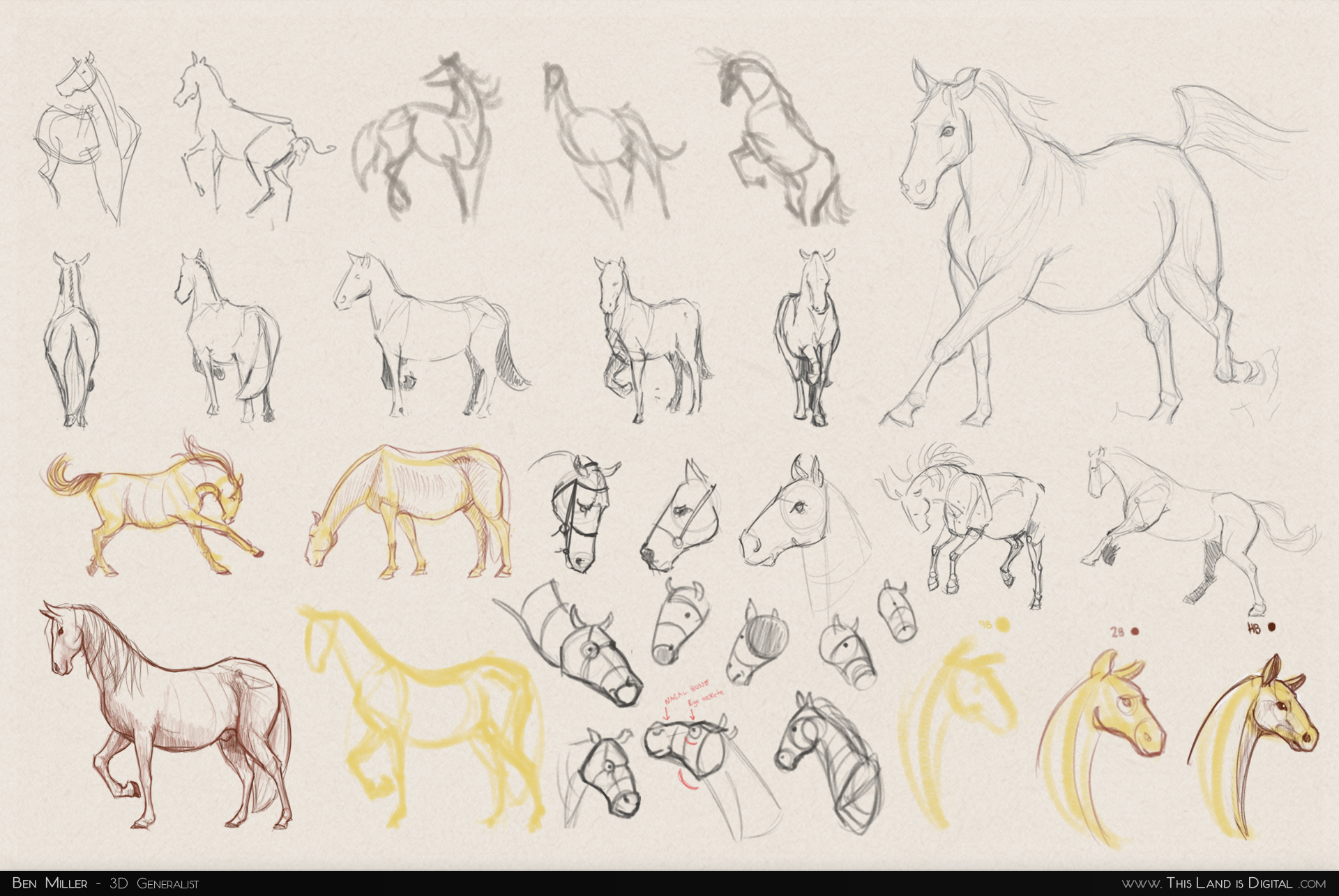Wedding Sculpture
ZBrush, Maya, Photoshop, Marmoset Toolbag (2014)
A close friend of mine from college commissioned me to make a small, 3D printed sculpture for her wedding. She requested "a work horse playing with a border collie" to represent the happy couple. The design I went with was of a dog leading a horse around by its lead rope, each pose balanced against the other to create flow and rhythm in the gesture.
Research
When I began this project I had very little experience studying animal anatomy and so immediately pulled out my copies of Ellenberger’s and Goldfinger’s excellent reference books. I knew that a work horse would emphasize anatomical correctness more than usual. Having post-graduation time, I also skimmed through Marshall Vandruff’s “Animal Anatomy for Artists” course. To scale the horse and dog relative to one another, I used the smallest estimated size of a Percheron and the largest estimate for a border collie. I even read up on the proper gait for a horse in order to ensure that the animals' legs would be raised at the correct times.
Sketching
An enormous pile of gesture sketches helped me to internalize what I was learning. I even used real life horses to provide references for the less photographed nooks and crannies of a horse’s body. This was especially useful for getting an idea how a horse’s skin stretches over joints, the scale and planes of their back, their ears, nostrils, and mouth. I did the same with the family’s shaggy dog whenever it fell asleep nearby.
Design
The finished sculpture is the result of many sculpting passes over the various muscles, forms, and fur. The earlier stages were more schematic, laying the surface forms out as best as I could understand them with all of the anatomical information visible at once like an ecorche. In the final passes on the horse I attempted to assess the actual flexors and extensors of the limbs in order to better predict which muscles were tensed. While not perfect, I hope I’ve done a decent job.
Bone Studies
Along the way I also sculpted the two more complex bones of a horse's body: the skull and pelvis. These were both incredibly useful for understanding the surface forms of a horse.










